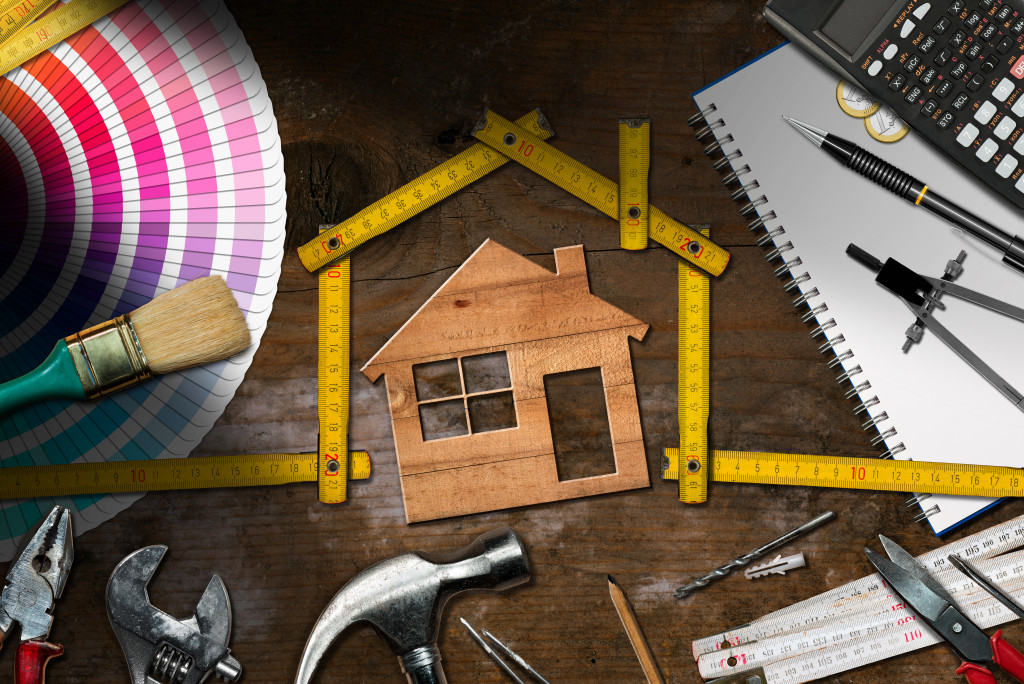Home improvement projects are a great way to add your personal touch to your home while increasing its value. When it comes to home improvement, there are two main things you need to consider: style and practicality. Although it can be tricky to strike the right balance between making your home look good and practical, it’s important to strike a balance between the two. Here are a few tips to help you find the right balance between style and practicality in your home improvement projects:
Practicality First and Style Second
When planning a home improvement project, it’s important to consider how it will impact the functionality of your home. You should only begin exploring your options for style and design after you’ve established its function and how it can make your home more livable. For example, if you’re considering a kitchen remodel, consider how the new layout will impact how you use the space. Will it make your kitchen more functional? If so, then you can start thinking about what kitchen style you want. But suppose your kitchen doesn’t need repairs or additional features or appliances. In that case, you can explore different design options without worrying about how they will affect the functionality of your kitchen.
Don’t Forget Home Value
Home improvement projects offer an excellent opportunity to add personal style to your home while increasing its value. This is because potential buyers will be looking at your home as an investment, and they will be willing to pay more for a home that looks good and is well-maintained. So, while you might not be considering selling your home right now, it’s still important to keep resale value in mind when balancing style and practicality. The common home features that add to your home value include updated kitchens and bathrooms, hardwood floors, and fresh wall paint. Among these, having hardwood flooring can impact a room’s welcoming atmosphere, especially in your living room. So if you also want your home upgraded to impress guests and be comfortable for your family, you should hire hardwood flooring installation services. Their expertise can ensure that your floors are installed correctly and add beauty and value to your home.
As for other home improvement projects that may not increase your home value, it’s important to remember that not every trend will be popular with future buyers, and some may even reduce the value of your home. For example, installing an oversized spa tub may be something you enjoy, but it could make your bathroom less functional and turn potential buyers away. On the other hand, choosing more classic styles and finishes will help to ensure that your home appeal to a broader range of buyers in the future. Ultimately, the best way to maximize the return on your investment is to consult with a real estate agent or appraisal before beginning any work. They can advise you on which improvements will most likely add value to your home.

Choose Quality over Quantity
It’s better to have a few high-quality pieces than many cheap items that need to be replaced frequently. When you’re shopping for furniture or décor, be sure to consider not only how it will look but also how well it will hold up over time. For example, it’s generally worth spending a little extra on solid wood furniture, which will last longer and age better than particle board or veneer. This is because solid wood is a sturdy, natural material that can be sanded down and refinished if it becomes scratched or damaged. But it’s much harder to repair if particle board or veneer gets damaged. The same goes for other home details like faucets and fixtures. It may be tempting to save money by buying the cheapest option, but beware that these items will probably need to be replaced more often. In the long run, it’s worth it to invest in higher-quality materials that will last longer.
Consider Your Cleaning Habits
When planning a home improvement project, it is important to balance style and functionality. One key factor to consider is your cleaning habits. If you like to keep a clean house, you will want to choose materials that are easy to clean and maintain. For example, vinyl floors are a good choice for high-traffic areas because they are easy to wipe down. Alternatively, tile floors are much easier to keep clean. Still, they may not fit with the overall aesthetic you are hoping to achieve. Another option is to choose low-maintenance materials for high-traffic areas, such as entryways and kitchens, and to reserve more luxurious materials for rooms with less wear and tear. By taking your cleaning habits into account, you can create a home that is both stylish and easy to keep clean.
Home improvement projects are a great way to add your personal touch to your home while increasing its value. But it can be tricky to strike the right balance between making your home look visually appealing and practical. By understanding how you can achieve style and function, you can create a living space that you’ll enjoy for many years.
